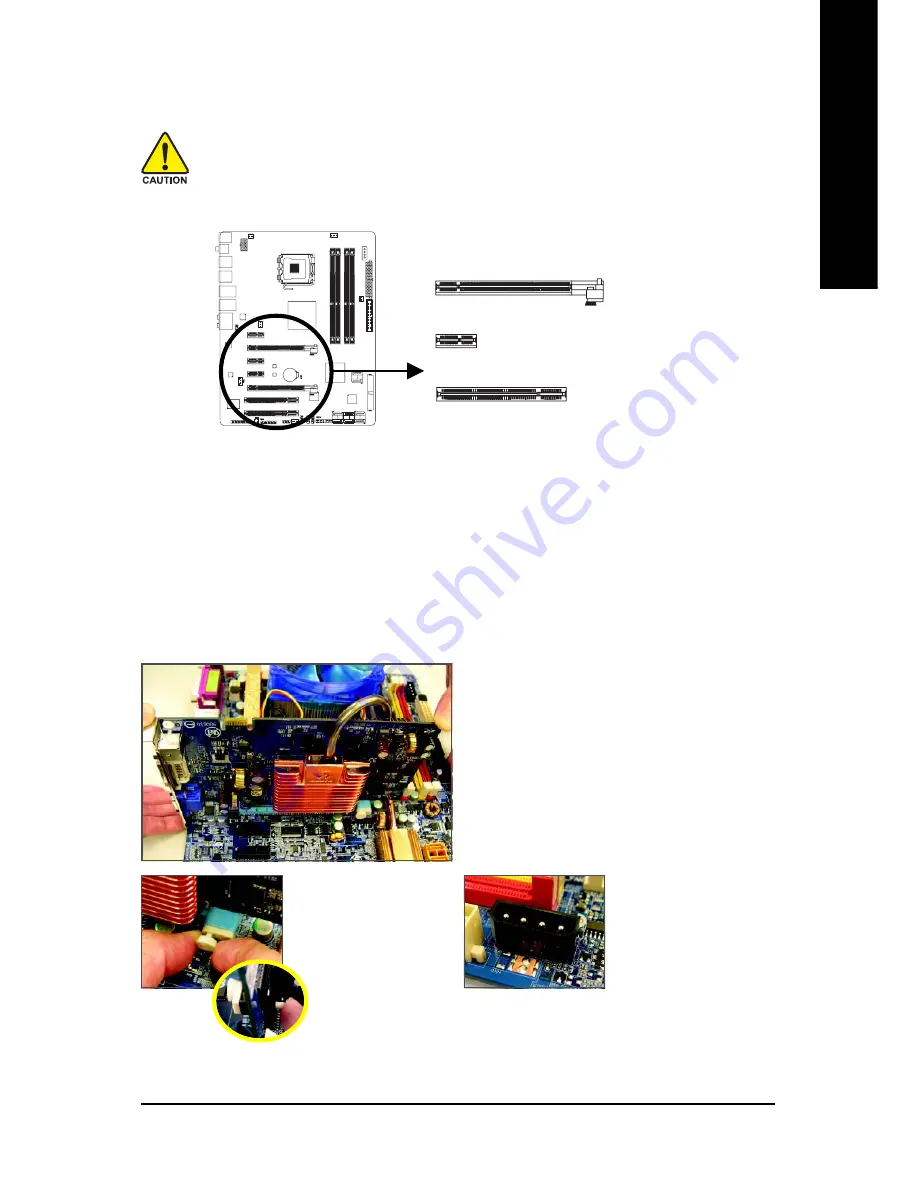
Hardware Installation
- 19 -
English
1-5
Installing an Expansion Card
Read the following guidelines before you begin to install an expansion card:
•
Make sure the motherboard supports the expansion card. Carefully read the manual that
came with your expansion card.
•
Always turn off the computer and unplug the power cord from the power outlet before
installing an expansion card to prevent hardware damage.
PCI Slot
PCI Express x1 Slot
PCI Express x16 Slot
Follow the steps below to correctly install your expansion card in the expansion slot.
1. Locate an expansion slot that supports your card. Remove the metal slot cover from the chassis back panel.
2. Align the card with the slot, and press down on the card until it is fully seated in the slot.
3. Make sure the metal contacts on the card are completely inserted into the slot.
4. Secure the card's metal bracket to the chassis back panel with a screw.
5. After installing all expansion cards, replace the chassis cover(s).
6. Turn on your computer. If necessary, go to BIOS Setup to make any required BIOS changes for
your expansion card(s).
7. Install the driver provided with the expansion card in your operating system.
Example: Installing and Removing a PCI Express x16 Graphics Card:
•
Installing a Graphics Card:
Gently insert the graphics card into the PCI Ex-
press x16 slot. Make sure the small white-draw-
able bar securely locks the graphics card.
•
Removing the Card:
Pull out the small white-
drawable bar at the end
of the PCI Express x16
slot to release the card
and then pull the card
straight up from the slot.
You can also press the
latch on the back of the
white-drawable bar to
release the card.
•
The motherboard pro-
v i d e s a P C I E _ 1 2 V
power connector, which
can supply extra power
to the onboard PCI Ex-
press x16 slots. When
you install two graphics
cards, connect the
power cable from your
power supply to this
connector.
















































